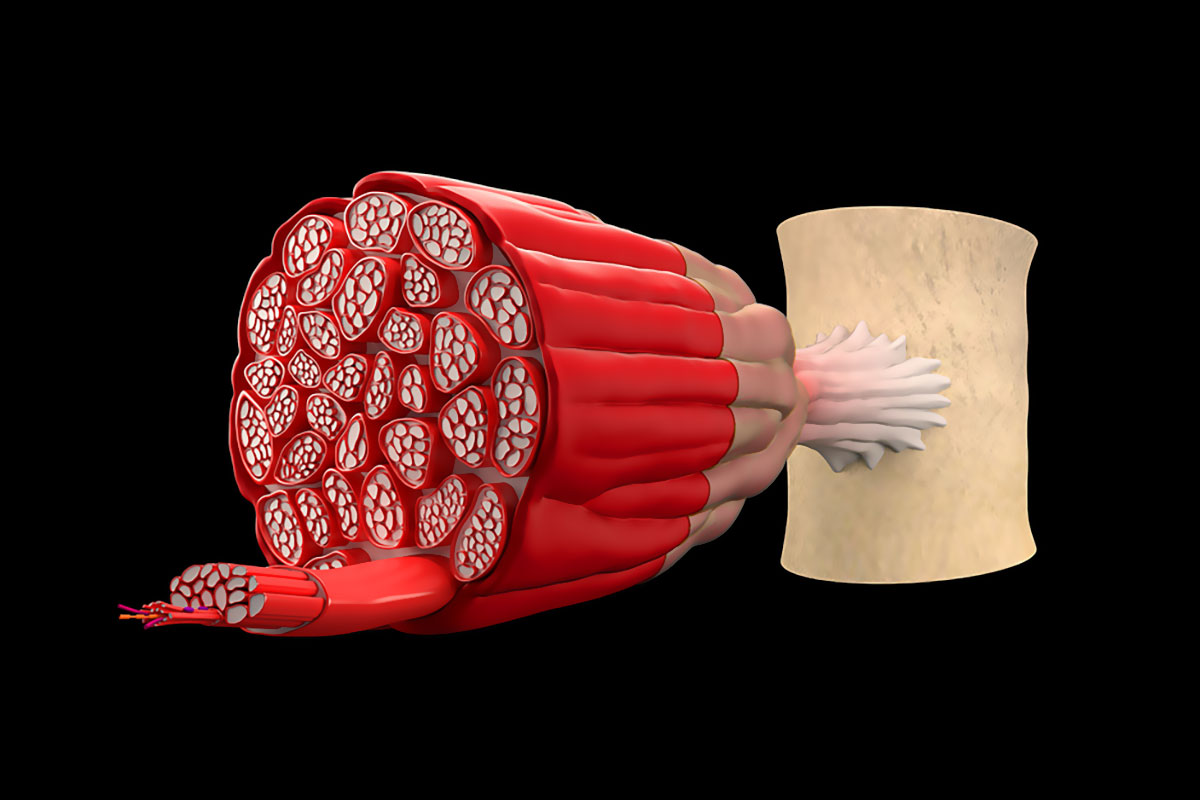Hypertrophy is the medical term for an enlargement of an organ or certain type of body tissue. In sports, we are talking about muscle hypertrophy – or the process of recruiting muscles. In contrast, atrophy is characterized by a decrease in tissue mass and volume.
In fact, hypertrophy is associated with the ability of muscle tissue to adapt to stress – which increases both strength and capillarization. Different types of training have different effects on muscle hypertrophy. Which exercises give you mass and which ones give you endurance?
Muscle hypertrophy – what is it?

The first condition for triggering muscle hypertrophy processes is a state in which the synthesis of contractile muscle protein exceeds its degradation. In other words, the body must receive more protein than it expends (both for maintaining metabolism and for muscle function).
The second condition is physical training in the form of strength training and performing fairly heavy exercises with a limited number of repetitions. This activates the processes of microinflammation of the muscles and requires restructuring of its structure, characterized by an increase in volume.
Note that muscle hypertrophy means an increase in the volume of existing fibers – while the processes of increasing the number of fibers (hyperplasia) are not typical for adults. Simply put, exercise helps to build muscle volume, but not to increase its amount.
Types of muscle hypertrophy
Myofibrillar hypertrophy is an increase in muscle fibers due to an increase in the volume and number of myofibrils (filamentous molecules of skeletal muscle). Sarcoplasmic hypertrophy – an increase in volume due to sarcoplasm (the nutrient fluid that surrounds the muscles).
Myofibrillar hypertrophy is characterized by lean and taut muscles, while sarcoplasmic hypertrophy is characterized by more voluminous and “pumped up”. Training in bodybuilding is mainly focused on sarcoplasmic hypertrophy, in workout and crossfit – on myofibrillar hypertrophy.
Muscle Growth Workouts

Training for hypertrophy implies regular progress – it can be expressed both in increasing working weights, and in increasing the number of repetitions or replacing exercises with more complex ones. Actually, hypertrophy is the body’s response to an ever-increasing load.
The specificity of the load (that is, the choice of exercises and training strategies), as well as the sports nutrition used, determine which type of hypertrophy will be used for recovery. In addition, the muscles of the legs respond better to sarcoplasmic hypertrophy, and the muscles of the upper half of the body respond to myofibrillar hypertrophy.
The body’s ability to recover
The third factor affecting hypertrophy is the body’s potential for recovery, which is expressed in the ability of tissues to assimilate the energy of proteins and carbohydrates. We are talking about both the production of the hormone insulin (it works as a key that allows the cell to receive energy), and the level of testosterone, cortisol and other hormones.
In particular, excessive cortisol production is characterized by increased fatigue and a tendency to catabolic processes in the muscles – the effect is exacerbated by a lack of calories in the diet (typical of drying) and overly active training.
It is also important that in the long term, hypertrophy training can lead to overtraining – that is, it is necessary to alternate heavy weight gain cycles with several months of lighter training.
Hypertrophy training rules

To achieve sarcoplasmic hypertrophy (and increase muscle volume), it is ideal to perform 8-10 repetitions of the exercise in a total of 4 approaches. The last repetitions should be performed to failure – that is, until it feels like the muscle is unable to perform the contraction to lift the weight.
In turn, to achieve myofibrillar hypertrophy (and increase endurance), training with a high number of repetitions and with the application of relatively low strength is necessary. For example – skiing, marathon running, or circuit training.



